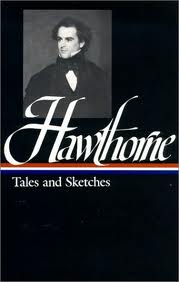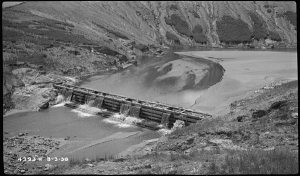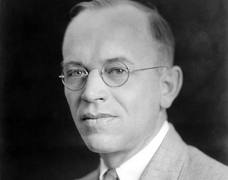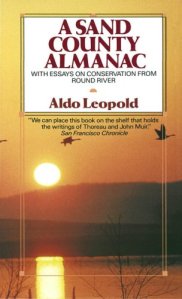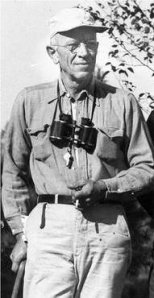I am going to take a leisurely approach to reading the works of Nathaniel Hawthorne, using as many entries as necessary in order to come to an understanding of him and his place in the American tradition. Over the course of a couple of extended delays, I have come to terms with impossibility of the schedule I set for myself. And as this project of reading the entire Library of America from an anarchist perspective is a wonderful experience, I see no reason to rush things too much.
Hawthorne’s work is divided into two volumes: the stories and the novels. The volume of tales collects Hawthorne’s stories from Twice-told Tales, Mosses from an Old Manse, The Snow-Image, A Wonder Book for Girls and Boys, and Tanglewood Tales for Girls and Boys. I suppose there are about 100 stories collected within. My rough plan is to take on around 10 of these a day and see what comes of it. The editors arrange the stories in order of publication so we will be beginning along with Hawthorne’s literary career, in 1830. (Fanshawe was self-published a couple years earlier and we will get to that in due time).
Hawthorne was 28 when his first sketches and tales were published and he had not yet left New England, but he had seen the whole of it, from rural Maine to Boston. Something we notice straightaway from Hawthorne is that New England provides one of the central tensions in his work. New England was home to both an American literary tradition as well as an authoritarian tradition (seen in colonial-era British aristocracy and in the Puritan autocrats) and it was never very clear which tradition was dominant. In any case, breaking free from the influence of tradition was a near impossibility.
I read the following stories: “The Hollow of the Three Hills,” “Sir William Phips,” “Mrs. Hutchinson,” “Dr. Bullivant,” “Signs from a Steeple,” “The Haunted Quack,” “The Wives of the Dead,” My Kinsman, Major Molineux,” and “Roger Malvin’s Burial.” Some of these are short stories, but others are biographical sketches. “Mrs. Hutchinson” (1830) is one of these, retelling the story of the life of Anne Hutchinson, the Puritan heretic. Hutchinson’s life essentially maps out the conflict between the authoritarian and the libertarian. Her crime was a rejection of the spiritual authority of the Puritan clergy and her argument for the spiritual equality of believers. Of course, brought before the court made up of these established clergymen, the outcome was not in doubt. Her punishment was exile and she was transformed into a vagabond, traveling first to Rhode Island and then to New York, where she was later killed by Indians. This, as we see in other early Hawthorne tales is one of the central conflicts in New England. The conflict between vagabondage and belonging parallels the conflict between authority and freedom.
Take for example, the description of a changing society in “Dr. Bullivant,” another biographical sketch. They sketch is set in the context of a changing New England, under siege from an English state eager to reign in the colonies, which they attempt under the leadership of the much maligned Sir Edmund Andros. A passage from this sketch is worth quoting at length: “The early settlers were able to keep within the narrowest limits of their rigid principles, because they had adopted them in mature life, and from their own deep conviction, and were strengthened in them by that species of enthusiasm which is as sober and as enduring as reason itself. . . . When therefore the old original stock, the men who looked heavenward without a wandering glance to earth, had lost a part of their domestic and public influence, yielding to infirmity or death, a relaxation naturally ensued in their theory and practice of morals and religion, and became more evident with the daily decay of its most strenuous opponents. This gradual but sure operation was assisted by the increasing commercial importance of the colonies, whither a new set of emigrants followed unworthily in the track of the pure-hearted Pilgrims. . . . Freebooters from the West Indies and the Spanish Main, — state criminals, implicated in the numerous plots and conspiracies of the periods, — felons, loaded with private guilt, — numbers of these took refuge in the provinces, where the authority of the English king was obstructed by the a zealous spirit of independence.” (36–37) The point here, is similar to the one Melville made in some of his Pacific writings. Mobility is a key to freedom, stagnation is its enemy.
Another theme in these early Hawthorne tales is burden we carry from history. It is in “The Hollow of the Three Hills” about a young beautiful woman who visits an old crone in an attempt to wash away her dubious past sins. However, washing away these sins is not as easy as walking away or moving to a distant land. This is the lesson of the rather humorous tales “The Haunted Quack” (1831). It is about an apprentice quack doctor who learned to brew and sell false potions to gullible people. After venturing on his own, the doctor (Hippocrates Jenkins), poisons an old woman and flees, only to be haunted every night. He flees and spends the last of his money running from the police. Eventually, he turns up at the place he started and learns that the old woman did not die and that he was sought after for his incredible healing skills, not for prosecution. He returns to his old craft of peddling fake medicines. The ghostly appearances are not explained but were likely a psychic projection of his guilt, a guilt that could not stop him from his immoral career.
It is most striking in the longer tale “My Kinsman, Major Molineux,” (1832) which combines the legacy of British aristocratic traditions with the burden of the past and the necessity of independence from it. The story follows a young man who is seeking Major Molineux, a British military officer for a job. He is in the old mindset of patronage, duty, and family duties. He is an outsider in Boston and therefore is taken to be a tramp. Indeed he has all the appearances of a tramp since he has little money, no local connections he can call on except for the “Major Molineux,” and no job. Furthermore, with the American Revolution brewing in the background, most Bostonians are not eager to help this sniveling youth find his aristocratic patron. All the youth can do is wander around the town asking for leads on Molineux. He is finally discovered as old, frail, and in the process of being publicly humiliated by the Bostonian crowd (tar and feathered). The narrator is advised to seek his own way in the world. In a real sense, they are asking him to take his place as one of the American revolutionaries, overthrowing the old system, represented by the aging and weak Major Molineux. With this, Hawthorne seems to place himself on the side of rough, contentious liberty. This does not mean that the past will always be easily overcome.
